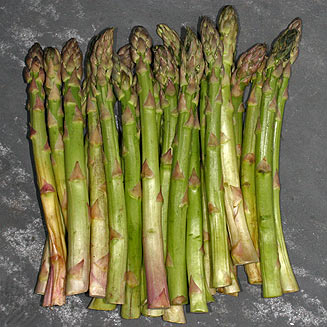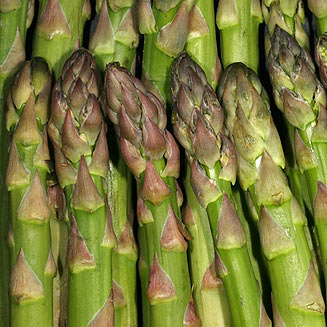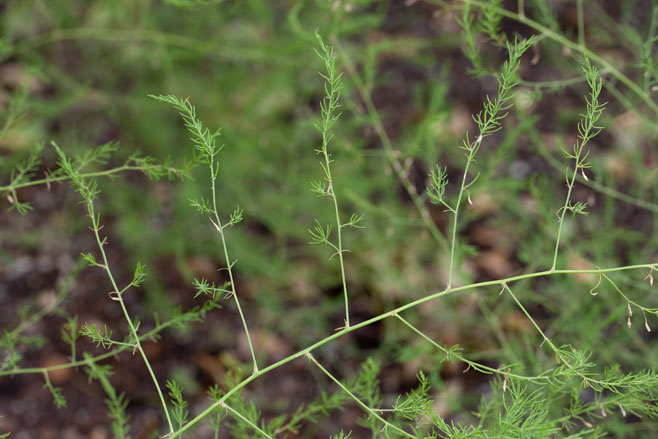|
Asparagus officinalis (Asparagus)
Life
> eukaryotes >
Archaeoplastida >
Chloroplastida
>
Charophyta > Streptophytina > Plantae (land plants)
> Tracheophyta (vascular plants) > Euphyllophyta > Lignophyta (woody plants)
> Spermatophyta (seed plants) > Angiospermae (flowering
plants)
> Monocotyledons > Order: Asparagales
> Family: Asparagaceae > Genus: Asparagus
 |
 |
|
Asparagus shoots as bought in a Cape Town
supermarket. [photos
H.G.
Robertson, Iziko ©] |
 |
|
An asparagus plant growing in the Vienna Botanical
Gardens, Austria. [photo
H.G.
Robertson, Iziko ©] |
Indigenous from North Africa,
through central and southern Europe to western and central Asia. Young
stems (termed 'spears') are cooked and eaten as a vegetable. Cultivation dates
back to at least the Ancient Greeks, Romans and Egyptians. It is a perennial
crop with harvesting of the spears taking place in late spring to early summer. The smell in one’s
urine after eating asparagus is caused by excretion of the substance methyl
mercaptan. Asparagus is regarded as a good source of minerals and of vitamins A,
C and E.
Publications
-
van Wyk, B.-E. 2005. Food Plants of the World -
Identification, Culinary Uses and Nutritional Value. Briza, Pretoria.
|
